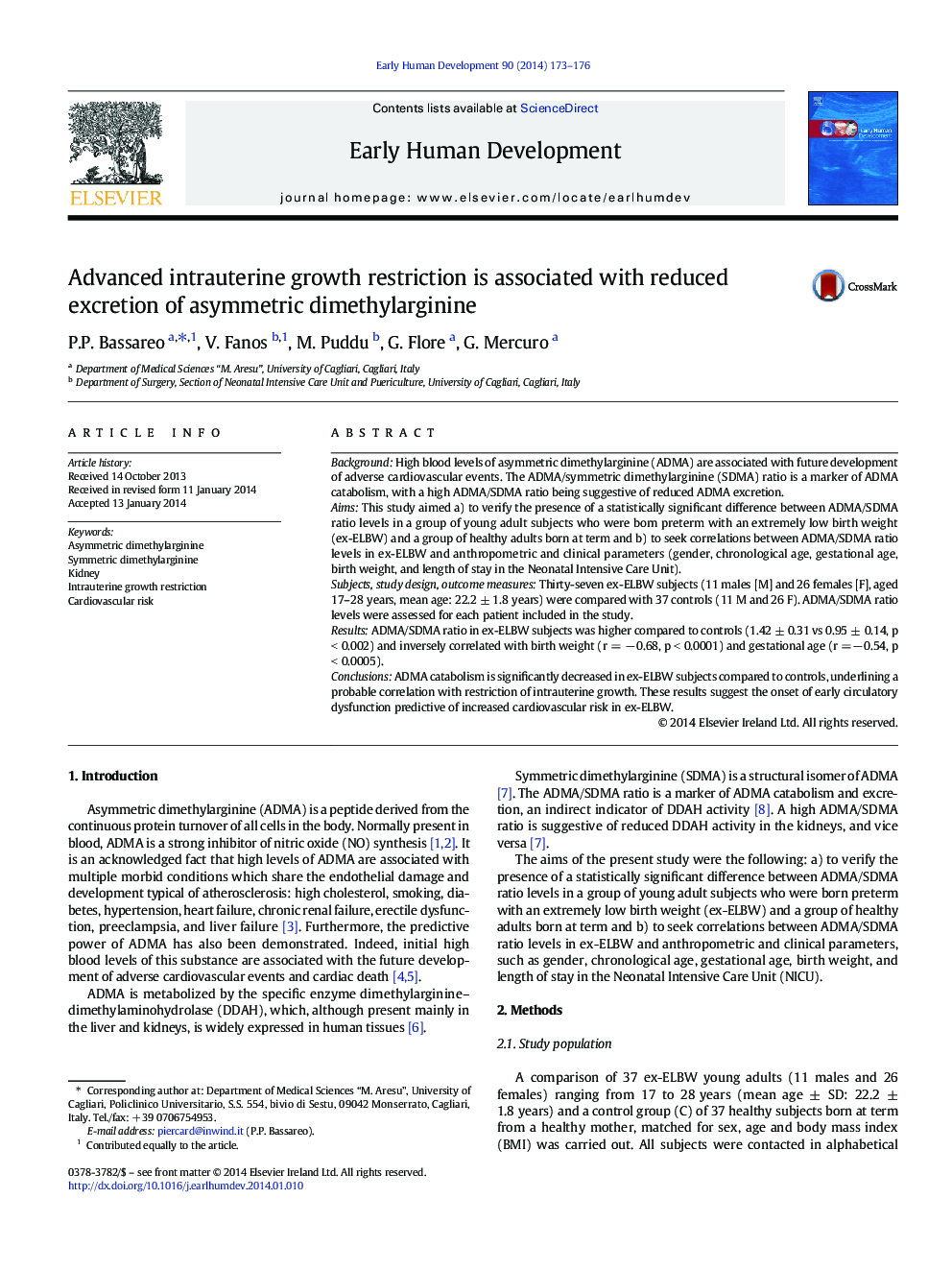| Article ID | Journal | Published Year | Pages | File Type |
|---|---|---|---|---|
| 3916619 | Early Human Development | 2014 | 4 Pages |
BackgroundHigh blood levels of asymmetric dimethylarginine (ADMA) are associated with future development of adverse cardiovascular events. The ADMA/symmetric dimethylarginine (SDMA) ratio is a marker of ADMA catabolism, with a high ADMA/SDMA ratio being suggestive of reduced ADMA excretion.AimsThis study aimed a) to verify the presence of a statistically significant difference between ADMA/SDMA ratio levels in a group of young adult subjects who were born preterm with an extremely low birth weight (ex-ELBW) and a group of healthy adults born at term and b) to seek correlations between ADMA/SDMA ratio levels in ex-ELBW and anthropometric and clinical parameters (gender, chronological age, gestational age, birth weight, and length of stay in the Neonatal Intensive Care Unit).Subjects, study design, outcome measuresThirty-seven ex-ELBW subjects (11 males [M] and 26 females [F], aged 17–28 years, mean age: 22.2 ± 1.8 years) were compared with 37 controls (11 M and 26 F). ADMA/SDMA ratio levels were assessed for each patient included in the study.ResultsADMA/SDMA ratio in ex-ELBW subjects was higher compared to controls (1.42 ± 0.31 vs 0.95 ± 0.14, p < 0.002) and inversely correlated with birth weight (r = − 0.68, p < 0.0001) and gestational age (r = − 0.54, p < 0.0005).ConclusionsADMA catabolism is significantly decreased in ex-ELBW subjects compared to controls, underlining a probable correlation with restriction of intrauterine growth. These results suggest the onset of early circulatory dysfunction predictive of increased cardiovascular risk in ex-ELBW.
